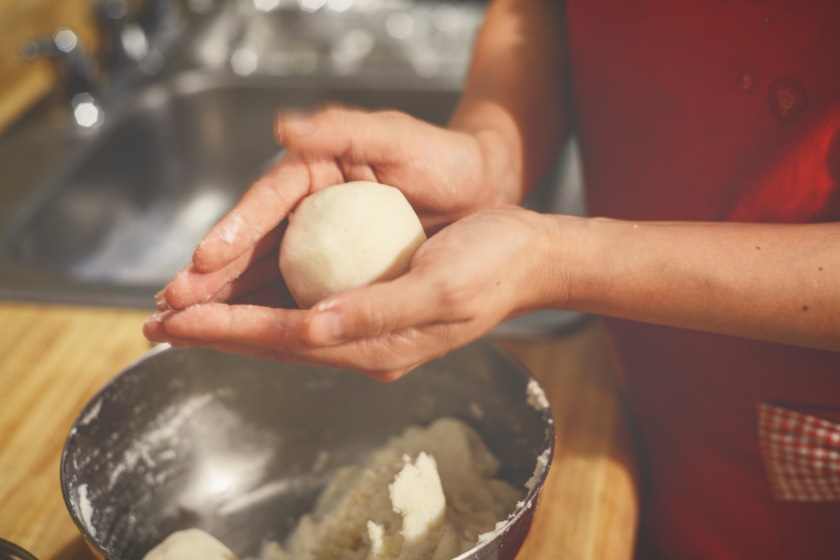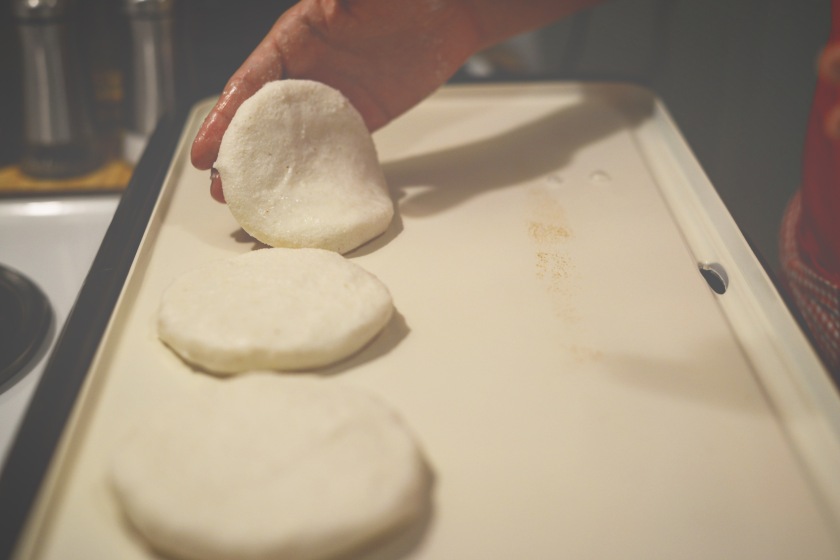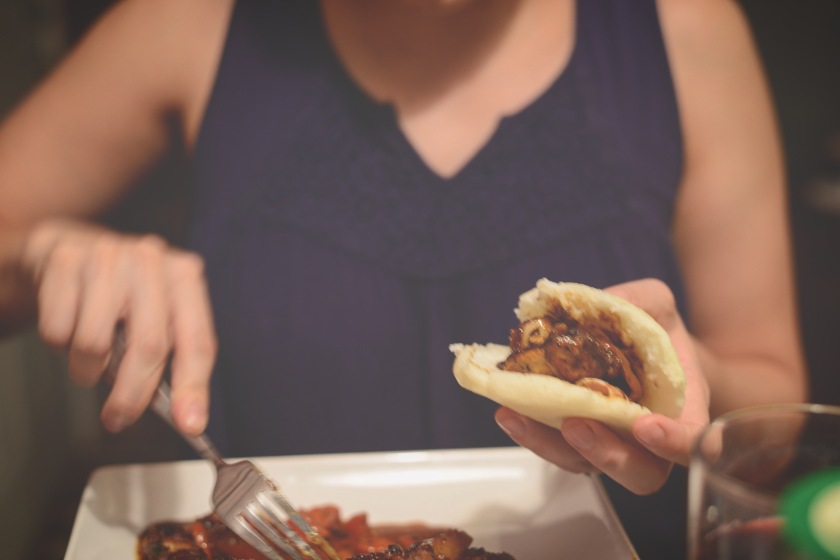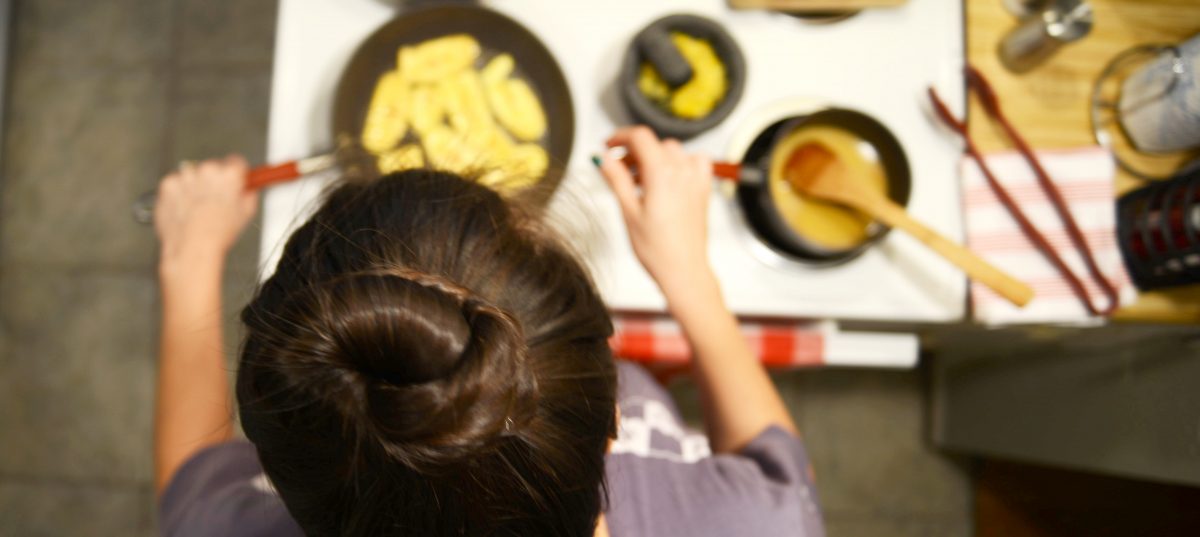Maita’s Arepas
We have a market near our home that sells locally grown fresh vegetables for great prices. Like green, red and yellow bell peppers for $ 0.69 each, or bags of large carrots for just $1.
It’s wonderful to my husband and I, because we budget a certain amount of money each week for groceries and also because it allows us to purchase great fresh produce for healthy meals.
Last week we bought some fresh sweet corn – my husband intended to either make grits or cornbread with it.
He didn’t.
But seeing the ears of corn reminded me of a time in my youth, when I lived in Venezuela. And they reminded me of my grandmother, Isabel. We called her “Maita.”
I remember visiting Maita knowing that she was going to cook arepas, a Venezuelan bread made from corn meal, thicker than a tortilla, but thinner than a biscuit. She would cook something different each visit, but one thing always remained a constant in her kitchen – the arepas. And when Maita cooked arepas, she made them from scratch.
Maita was from the countryside, but lived in a town, so her house was not like the countryside she grew up in. But she had a miniature farm of sorts.
She had ducks and chickens, all kinds of herbs and vegetables, several fruit trees – all on a small scale compared to the farm she and my grandfather, Abuelito Gabino, owned in another area.
She had a grinder on the corner of the heavy, red, wooden dining room table. She would use it to grind fresh coffee, corn, meats, and grains.
My brothers and I would fight over who would get to grind corn and coffee for her. Anytime we arrived at her home and saw the corn sitting on the table, we would get excited at the prospect of using the grinder!
I see now that she was subtly making us work, but at the time, we just thought it was fun.
So once the corn was ground, she would make corn flour, then would add the flour to some salt water and mix it. She never used measures, but cooked on sight, scents and tastes alone. Even if there were a recipe, she may not have been able to read it anyway.
Maita grew up in an era of dictatorship in Venezuela; an era when women were not permitted to attend school, so she never learned to read or write. But she was no fool, and nobody could make a fool of her.
Though she couldn’t read words, she could read people, and knew when others were trying to cheat her, which, as she grew older, rarely happened. People actually began to fear her because of her straightforwardness, sternness and stubbornness.
She, to me, was proof that nothing can limit you except yourself and your attitude toward life.
So, once the flour became a dough, she rolled the dough into balls and formed the arepa discs with her hands. Her hands were like decades of life lessons and large family gatherings.
As a young woman, she adopted four of her nieces and nephews after their mother – her sister – died. So while in her early-to-mid 20s, Maita was caring for her mother and four children, all by herself. She went on to marry Gabino by age 30.
For years before marriage, she honed her culinary skills out of necessity.
She used her hands for everything.
I remember each arepa having indentions of Maita’s small-but-strong fingers.
Her fingers were as strong as her will – a will that decided life wasn’t going to determine her success or her children’s success. A will that never allowed her to give up.
In fact, once married, she and Gabino had 3 sons and a daughter. All of whom went to college, graduated and had families.
She proved to me that your limitations don’t have to be your offspring’s limitations.
She would cook the arepas on a dry skillet and never used a spatula. She would flip each arepa by hand.
She even used her hands to discern if the arepas were ready. She had a way to tell when each arepa was finished – she would pick them up and slap them with her finger. She’d determine the arepa’s readiness based on the thumping sound it made.
She always made 2 giant arepas for Abuelito’s lunch, and even when we weren’t there to help her cook, we would eat her arepas because every day she’d send a basketful home to us by way of my father.
She lived into her 80’s and died in 2007, just a couple of years after my family moved to Mexico.
Maita loved cooking. She loved cooking arepas. But most of all, she loved cooking arepas for us. It was one of her many ways of showing how much she loved us.
Now, I’ll give you a quick tutorial of how to make arepas like Maita (without the fresh ground corn)!
* (In the US or other countries: You can find “Harina PAN” -A special Corn meal for arepas- in Latino stores or supermarkets with a wide variety of international items).
How to make arepas in 10 easy steps (tutorial with picture guide)
- 1 Cup of warm water (this is for enough arepas for 2 people) in a medium-sized mixing bowl.
- Add a teaspoon of salt to warm water.
- Slowly mix Harina P.A.N. into water

until smooth

until it thickens (into mashed potato-like consistency).
4. Let sit for a few minutes while you turn on the stovetop or griddle to medium-low heat and prepare your non-stick pan.
5. Roll dough into balls

6. Flatten dough ball into arepa

7. Place arepas on cooking surface on medium-low heat

8. Cook approx. 7 minutes on each side (this really depends on the pan, but see photo below for what arepa should look like)

and cover to keep moisture in

9. Remove from heat once they are ready. You’ll know they’re ready when they make a hollow sound when thumped in the center (see video below)
10. Cut open and fill with cheese, meat, or anything you want and enjoy!





Oh yummy!!! This post makes me want to try and cook them!! Thanks for sharing 💜
LikeLiked by 1 person
Thank you Rachel!! Please try them and let us know how it went! 😀 😉
LikeLike